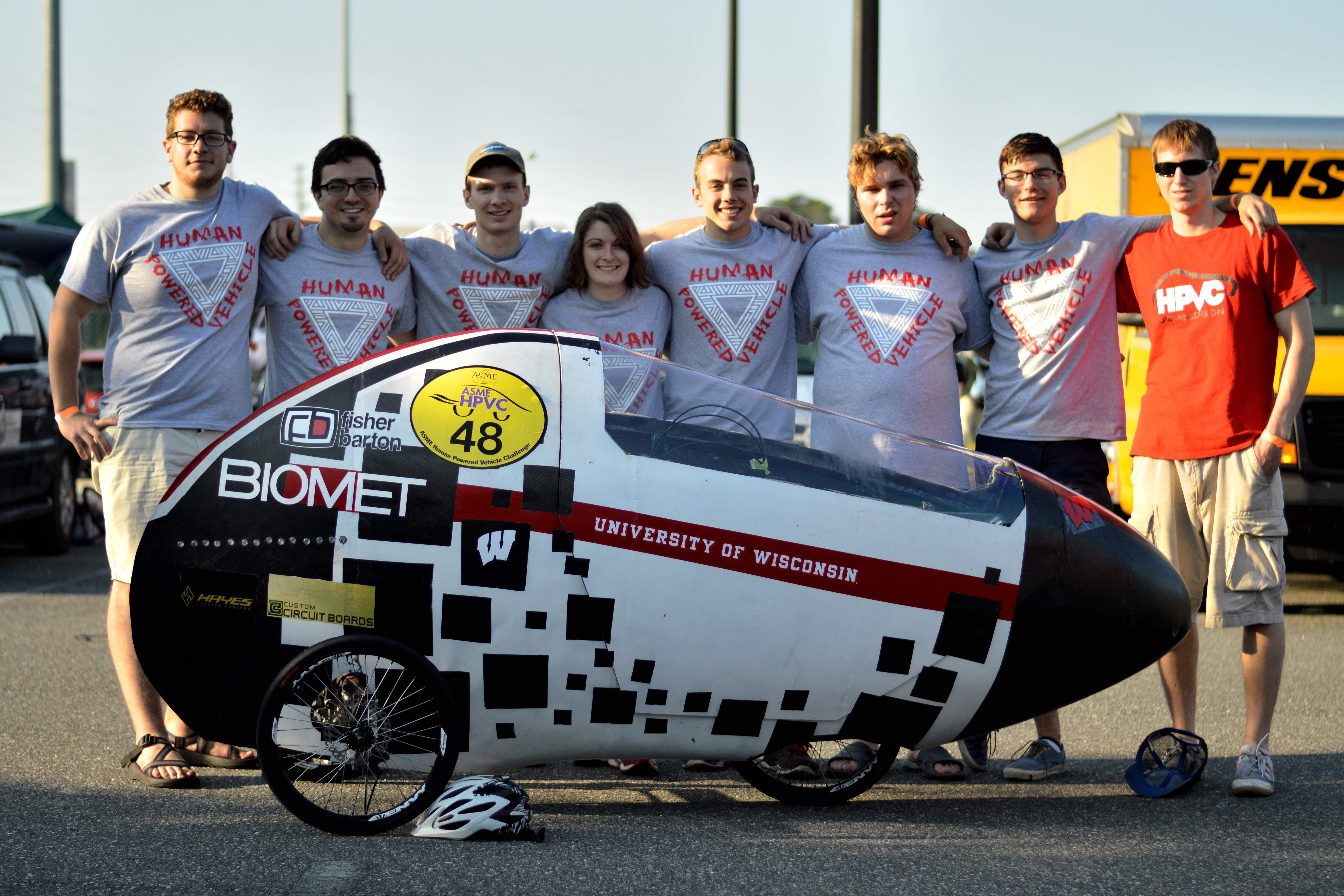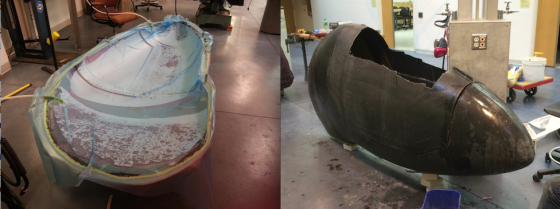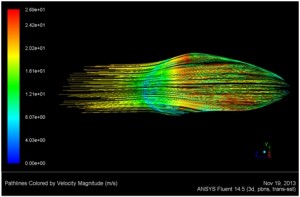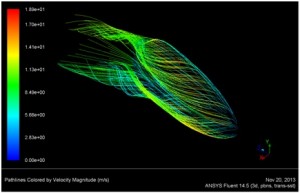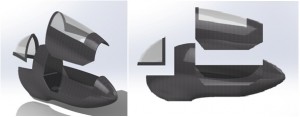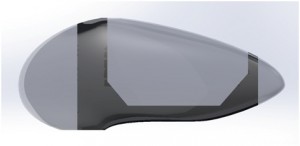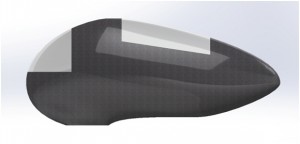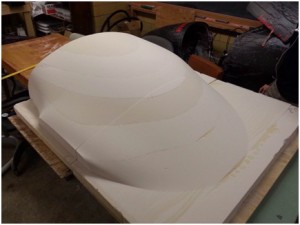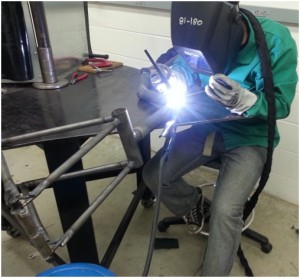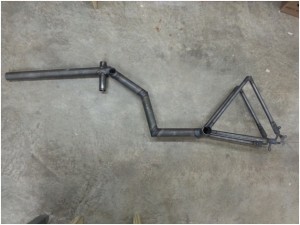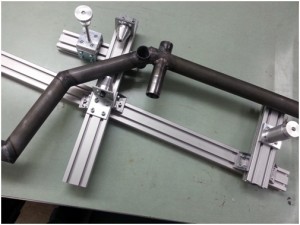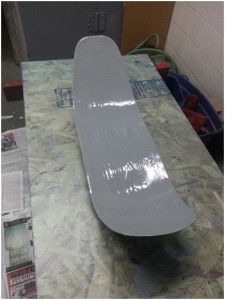On Thursday, April 10th, the team put the finishing touches on the vehicle, dubbed Udder Domination, and then packed everything up into a U-Haul and made the long drive from Madison, WI to Orlando, FL. We arrived Friday afternoon with enough time to make some last minute modifications, check out other team’s designs, and pass our safety inspection with flying colors!

The freshly painted fairing – carbon fiber cow prints.

We made sure there were no sharp edges that could hurt the riders in a crash.
Later that night we presented our design to the judges and did a few practice laps in the parking lot to get comfortable with the vehicle. Then, it was time to get a few hours of sleep before waking up at 5:00am the next morning to compete in the drag race.
The drag race was held on a 200 meter flat course on the beautiful University of Central Florida campus. In this event, teams demonstrate the acceleration and top speed of their vehicles by going head to head against other teams in a double elimination tournament. Unfortunately, our lack of practice combined with the sensitive controls caused some stability issues that prevented us from reaching top speed. We were not able to meet the qualifying times for the men’s or women’s drag event, so we watched the other team’s compete and soaked up some Florida sun.

Sean, at the start of the men’s drag race.
The endurance race was on Sunday and consisted of 2.5 hours of continuous racing! The course was about 1.5 miles long and featured many obstacles to test the practicality of the vehicles, including speed bumps, grocery pickups, a slalom section, and hairpin turns. Our chain derailed at the start line but once we got the vehicle up and running, it handled the obstacles with ease. After about 16 laps, the chain got caught in the front wheel so Lucas had to carry the vehicle across the finish line. It made for a very exciting finish!

Drew, leaning into a turn during the endurance race.

Emily, coasting away from the slalom section.

With 30+ teams competing in the endurance event, there was a lot of traffic.

Lucas carrying the vehicle towards the finish line!

UW-Madison was one of four teams that had to carry their vehicles over the finish line!
Although a lot of little issues prevented us from scoring as well as we had hoped, we were really happy with how the vehicle turned out this year. It weighed 65 lbs (20 lbs lighter than last year!), and was the most aerodynamic vehicle we have ever made. We plan on getting some more practice this summer and will try to break our goal of going 50 mph on flat ground.
Thanks to the University of Central Florida for hosting and to every company and individual that helped us with the project!

Big thanks to all of our sponsors!


